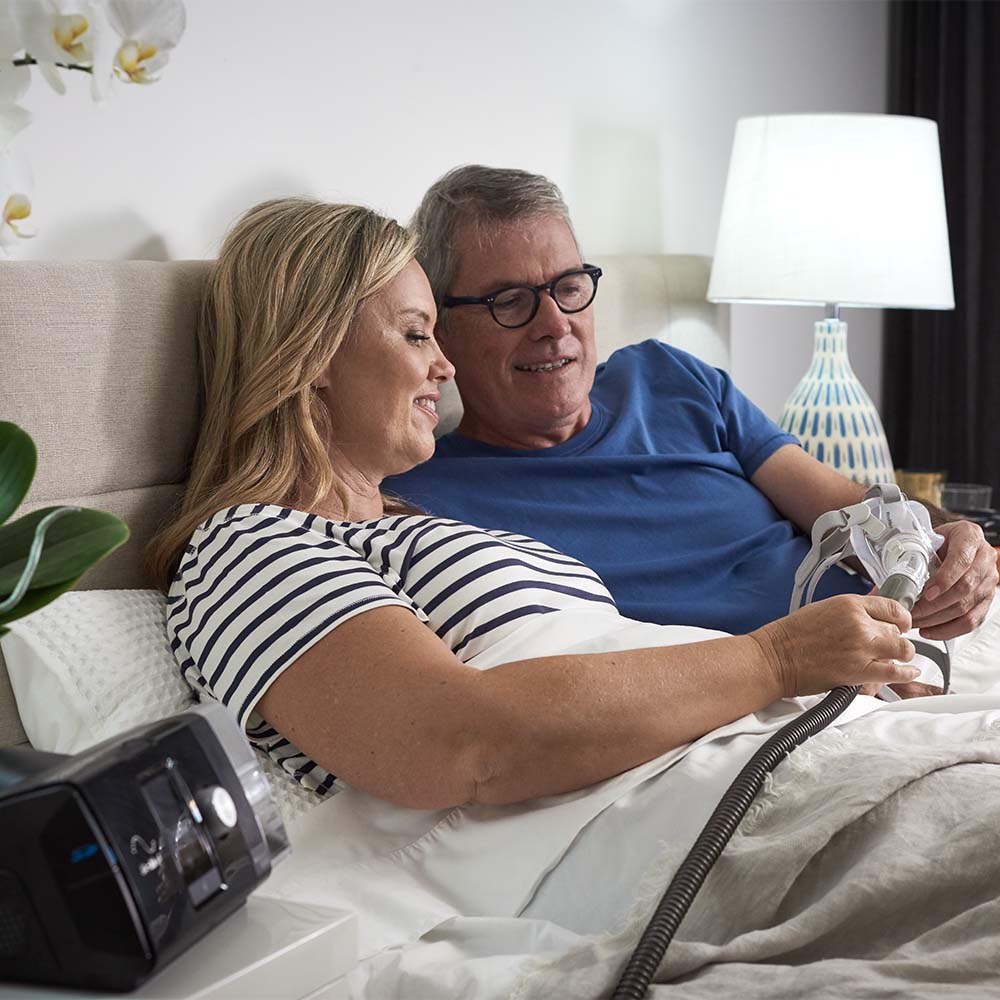Respiratory
Exploring the World of Sleep Apnoea
If you’re grappling with obstructive sleep apnoea, you’re certainly not alone in this struggle.
Recent scientific research has shed light on a staggering global issue, revealing that over 936 million individuals worldwide are grappling with this condition. This striking revelation, unveiled in a prominent respiratory health journal, dwarfs the World Health Organisation’s 2007 estimate of just over 100 million cases.
More than 85% of sleep apnea patients remain undiagnosed. This alarming statistic carries significant implications, increasing the likelihood of workplace and road accidents and contributing to a host of other serious health problems, including hypertension, cardiovascular disease, and compromised glucose control for diabetic patients. Recognizing the risks is crucial and addressing them commences with identifying high-risk individuals through screening.
What Triggers Sleep Apnea?
The primary and most significant trigger for obstructive sleep apnea (OSA), which is the most common type of sleep apnea, is obesity or excess body weight. When a person is overweight or obese, especially with a higher proportion of fat in the neck and throat area, it can lead to the following mechanisms that contribute to OSA:
- Increased Tissue Mass: Excess fat in the neck and throat can put pressure on the airway, making it more likely to collapse during sleep.
- Reduced Muscle Tone: Obesity can lead to decreased muscle tone in the upper airway, making it less able to stay open during sleep.
- Inflammation and Fluid Retention: Obesity is associated with inflammation and fluid retention in the upper airway, which can further narrow the air passage.
- Impaired Respiratory Control: Obesity can affect the control of breathing, making it more likely for the airway to collapse or become obstructed.
Fascinating Sleep apnea Statistics
Sleep apnea is a prevalent sleep disorder that affects a significant portion of the population. Here are some fascinating statistics related to sleep apnea:
- Global Prevalence: Sleep apnea is estimated to affect hundreds of millions of people worldwide. According to some estimates, over 936 million people worldwide are affected by sleep apnea, making it a widespread health concern.
- Undiagnosed Cases: One striking statistic is that a substantial portion of sleep apnea cases remains undiagnosed. More than 80% of individuals with sleep apnea are believed to be undiagnosed and untreated, which means they are unaware of their condition.
- Gender Differences: Sleep apnea is more common in men than in women. However, the risk for women increases if they are overweight or have a family history of the disorder.
- Age-Related Increase: Sleep apnea becomes more prevalent with age. It is more common in middle-aged and older adults, although it can affect individuals of all age groups, including children.
- Obesity and Sleep Apnea: Obesity is a significant risk factor for sleep apnea. A substantial number of individuals with obesity also have sleep apnea, and weight loss can often lead to improvements in the condition.
- Impact on Health: Untreated sleep apnea is associated with a range of serious health consequences. It can increase the risk of conditions like hypertension, heart disease, stroke, type 2 diabetes, and cognitive impairment.
- Contribution to Accidents: Sleep apnea-related fatigue and daytime sleepiness can lead to an increased risk of accidents, both in the workplace and while driving. People with untreated sleep apnea are more likely to be involved in accidents.
- Economic Costs: Sleep apnea has significant economic implications. It can result in increased healthcare costs, including hospitalizations, and productivity losses due to absenteeism and reduced work performance.
- Treatment Success: Treatment options, such as continuous positive airway pressure (CPAP) therapy, can be highly effective in managing sleep apnea. Many individuals experience significant improvements in their sleep quality and overall health with proper treatment.
- Growing Awareness: There is a growing awareness of sleep apnea and its consequences in the medical community and among the general public. This increased awareness has led to more individuals seeking diagnosis and treatment for the condition.
Best Auto CPAP Machines on the Market

Warning Sign: Obstructive Sleep Apnea (OSA)
Obstructive Sleep Apnea (OSA) can have significant health consequences if left untreated. Recognizing warning signs and seeking medical evaluation is crucial for early diagnosis and intervention. Here are some warning signs of OSA:
- Loud and Persistent Snoring: Frequent loud snoring, especially if it is disruptive to others and occurs most nights, can be a sign of OSA. It is often accompanied by pauses in breathing.
- Pauses in Breathing: Witnessed episodes where someone stops breathing during sleep, followed by choking, gasping, or snorting sounds as they try to resume breathing.
- Excessive Daytime Sleepiness: Feeling excessively tired during the day, regardless of how much time you spend in bed at night, can be a warning sign of disrupted sleep due to OSA.
- Morning Headaches: Waking up with a headache, particularly in the morning, can be a result of oxygen deprivation during sleep caused by OSA.
- Difficulty Concentrating: Problems with concentration, memory, and cognitive function can arise due to inadequate sleep caused by OSA.
- Irritability and Mood Changes: OSA can lead to mood swings, increased irritability, and even depression.
- Frequent Nighttime Urination: Needing to urinate frequently during the night (nocturia) can be a symptom of OSA, as the frequent awakenings disrupt sleep.
- Decreased Libido: OSA can affect sexual function and lead to a decreased interest in or ability to engage in sexual activity.
- High Blood Pressure: Hypertension (high blood pressure) is a common comorbidity with OSA. If you have high blood pressure that is difficult to manage, it may be related to sleep apnea.
- Obesity or Weight Gain: Being overweight or obese is a significant risk factor for OSA, and weight gain can worsen the condition.
- Gasping or Choking: Awakening abruptly from sleep with a sensation of choking or gasping for air can indicate OSA.
- Dry Mouth or Sore Throat: OSA can lead to mouth breathing during sleep, which can cause a dry mouth or sore throat upon waking.
- Restless Sleep: Tossing and turning frequently during the night, or being aware of restlessness while sleeping, may be a sign of disrupted sleep due to OSA.
If you or someone you know is experiencing these warning signs of OSA, it is essential to consult a healthcare professional or a sleep specialist for a comprehensive evaluation and diagnosis. Early detection and appropriate treatment can significantly improve the quality of life and reduce the associated health risks of sleep apnea.



